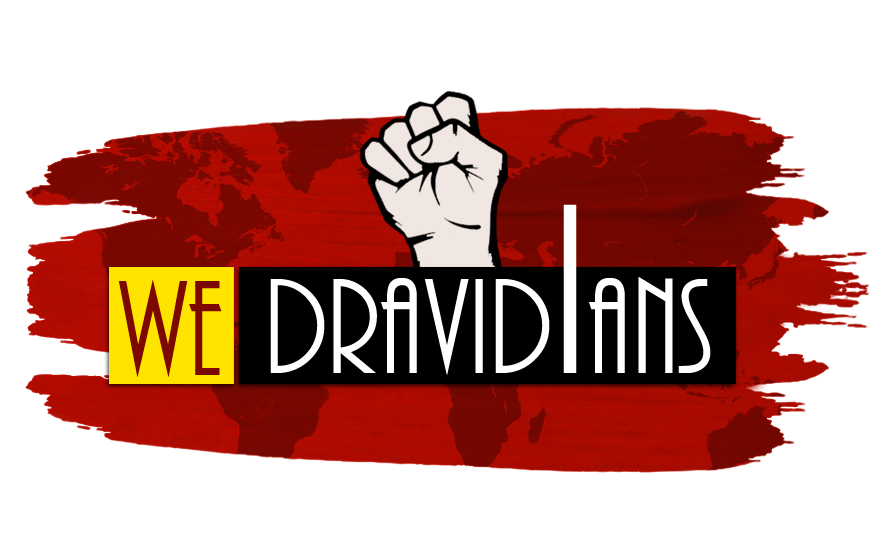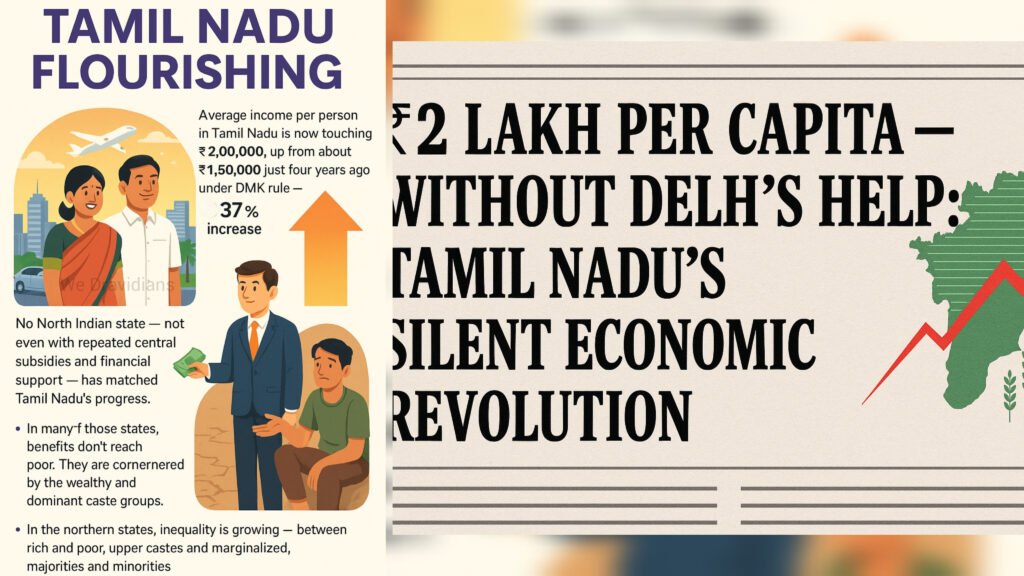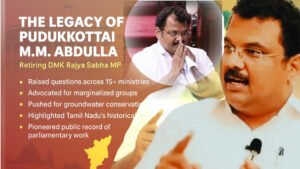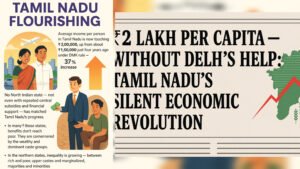Rising Incomes, Booming Markets — and a Governance Model That Works
The average income per person in Tamil Nadu is now touching ₹2,00,000 — up from around ₹1,50,000 just four years ago under DMK rule. That’s a 37% rise, placing the state among the top three in India, well above the national average of ₹1,14,000.
People’s purchasing power has surged. Tamils are now traveling abroad for leisure in growing numbers, reflecting their rising disposable income. They’re buying premium cars, upgrading their lifestyles, and investing in better living standards.
Real Estate Resurgence
After more than a decade of stagnation — including the COVID-era slump — Tamil Nadu’s real estate sector is booming. In Chennai alone, office leasing rose by 57% in the first half of 2025, while residential sales jumped by over 40% in just one quarter. The confidence is back, and the economy is moving.
Growth Despite Delhi’s Neglect
All of this is happening despite serious roadblocks from the Union Government — from delays in disaster relief to withheld GST dues and discriminatory allocations in health and education funds. Yet Tamil Nadu pushes forward.
According to NITI Aayog’s Multidimensional Poverty Index (MPI), only 4.89% of Tamil Nadu’s population lives in poverty — one of the lowest rates in India. Contrast this with Bihar (26.59%), Uttar Pradesh (37.79%), and Jharkhand (42.16%).
Industries Are Growing — But Maharashtra Claims the Tax
Tamil Nadu hosts the highest number of operational industries in India. However, many of these companies keep their headquarters in Mumbai, allowing Maharashtra to claim the tax revenue generated by Tamil Nadu’s growth engine. Yet, the state remains undeterred.
Despite this, no North Indian state — not even with repeated subsidies and central aid — has managed to match Tamil Nadu’s human development or industrial scale.
Why the Gap?
In the BIMARU states, welfare benefits rarely reach the poor. They’re often cornered by the rich and dominant caste elites. Inequality is growing — between rich and poor, upper castes and marginalized communities, majority and minority groups.
In Tamil Nadu, these gaps have narrowed significantly. That’s the Dravidian difference.
A Model Rooted in Rationality
The Dravidian Model of Governance is grounded in rationality, scientific thinking, social justice, and education. It’s not built on symbols and slogans — but on results.
Tamil Nadu educates its children generation after generation. In many BIMARU states, children are still raised on hatred and exclusion. While Tamil Nadu focuses on schools, jobs, and social mobility, others are focused on temples and tokenism.
The Leadership Legacy
Tamil Nadu has had consistent, visionary leaders: Periyar, Anna, Kalaignar, MGR, Jayalalithaa, and Stalin. Their politics may have differed, but their goal was common — upliftment of the people.
BIMARU states, on the other hand, suffer from unstable leadership, communal polarization, and a lack of long-term vision.
A Contrast in Destiny
Tamil Nadu’s population stands at 7.5–8 crore, and the state accommodates nearly 1 crore migrant workers from across India. Even accounting for their families in home states, 8–10 crore people still live in poverty, lacking basic amenities in BIMARU regions.
Tamil Nadu did in 60 years what some states may not achieve in 1000. The reason is simple:
Tamil Nadu invests in education, not indoctrination.
It practices inclusion, not exclusion.
It chooses progress, not propaganda.
Tamil Nadu can sympathize with its fellow citizens from BIMARU regions. But ultimately, only they can change their own destiny — through what they demand, accept, and vote for.







More Stories
From Pudukkottai to Parliament: M.M. Abdulla’s Voice for the Voiceless
Sivaji came to Tamil Nadu to kill his brother & Loot the wealth of Tamil Nadu?
Aditya Om — The Filmmaker Many Fear, But Truth Embraces